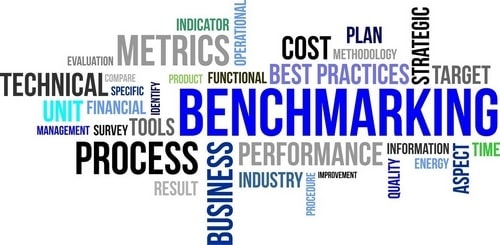Benchmarking is becoming a common practice among businesses and organisations. Unfortunately, many organisations pay as much as possible for benchmark services, get the numbers, yet they fail to incorporate the numbers into their management approaches. If you are acouple of organisations that don’t exploit a benchmark benefit or not utilising your benchmarks, then you are problem wondering its significance as a management tool.
Is benchmarking a must? Why do organisations benchmark? What do you stand to benefit from this service as an organisation? How does it apply to your organisation? These are some of the questions you are a problem asking right now. Well, as the saying goes, “If it’s not being measured, it’s not being managed.”
Benchmarking, therefore, is a way for organisations to evaluate its performance, productivity and quality concerning other organisations of its calibre. If effected carefully, benchmarks can help move an organisation towards an ideally more efficient and productive state. This practice helps in encouraging cultural change in an organisation, creating staffing guidelines, productivity reporting, performance improvement, cost management, etc.
Organizational change does not come about easily; this means that you will experience obstacles and challenges when you try to initiate a change in your organisation’s culture. Sadly, the current economic times are harsh which forces most businesses to change a few of their cultural aspects to be able to survive. Benchmarks from a trustworthy source give the instructional resources for executive change agents by presenting new management ideas and strategies to professionally and prepare managers attempting to meet the present operating necessities.
Ideally, you must understand that this is just a management tool. It shouldn’t, therefore, be used to determine an organisations staffing standards solely. Instead, it should be utilised as a guide to provide you with a sensible scope of staffing practices, given your organisation’s capacities and workloads. Effectivebenchmarks should mull over the distinctive departmental features between you and other similar organisations.
Although not many benchmark companies provide this service, any quality benchmark service should provide access to a reliable productivity system. If you are opting to benchmark, check to see if your service provider offers this element. Ifit doesn’t, and then you may want to switch to a provider that provides the service.
To manage effectively, it is critical to have an efficiency detailing framework set up that measures key fundamentals and that creates reports with enough recurrence to take into consideration key management acclimations to enhance your profitability as an organisation.
You need to know that benchmarks without accurate data are pointless. You have to be keen in ensuring that the data you use to manage your firm is correct and accurate. A reliable benchmark service ought to break down your organisation’s information completely before playing out the real benchmarking process. Prevalent benchmark services help settle imperfections in management information.
For your organisation to benefit from these services, it is imperative that you move past the numbers onto variance resolution. A complete benchmarking service outfits your management team with the resources to distinguish and organise difference determination for the execution constraining elements that drive up operational expenses and effect quality. Benchmarks can and ought to be utilised as a vehicle for managing these costs and performance improvement
Table of Contents
Importance of Benchmarking
1) Performance enhancement :
This would be a common goal for every company following benchmarking. The improved efficiency in the process leads to better results and helps the organizations to achieve outstanding results. Improved performance also yields excellent productivity and morale boost for the employees as well. A satisfied employee is more productive than an unsatisfied one.
Earlier, employee appraisal used to be a major issue and HR managers were often accused of partiality and favoritism. But today, many companies have adopted the Key Performance Indicator (KPI) process for employee appraisal. The process is just and fair and the employee and manager sit together and agree on common objectives to be achieved at the end of the year and the set objectives are measured against the achievement.
This results in transparency between the organization and the employee and they are motivated to work and in turn, improve efficiency. The adoption of this process by many companies would be for improved productivity and process enhancement.
2) Internal co-operation :
Several multinationals have different divisions working simultaneously. Even in smaller organizations, there may be a particular manager or a team which is performing better than others. Companies have done internal comparison and changes in accordance with the better process to improve the performance of others.
This result in increased internal co-operation and employee bonding. It also promotes team building and internal fair competition turns out to be in favor of the organization. In case of the smaller organizations, benchmarking helps other teams or employees to follow the examples of the better one to improve themselves and their processes.
3) Bridging the Gap :
Benchmarking helps to identify the gaps in the process that is currently followed. Thus organizations have a clearer picture in terms of shortcomings as well as the current rate of industry standards. This helps them to make necessary changes and adjustment in their current process and act accordingly in order to be back in the race and gain the edge over the competition.
For ex, a company which is growing at 5% year on year, is satisfied with the overall profits. But after benchmarking finds out that the average industry growth rate is 8.5% while the market leader is growing at 17%. It then has to make necessary changes and bridge the gap. Although 5% is a fair figure but post benchmarking, the figure does not even match the industry average.
4) Reduce costs:
While Benchmarking is primarily used to improve and enhance the process, another major part would be to reduce the costs of production or marketing or other associated costs which would further improve the profitability of the company. This may include making minor adjustments in the processor changing the process altogether.
The company may follow from a leader and make the necessary changes in order to reduce the costs like the purchase of raw materials in bulk or outsourcing inventories or outsourcing the entire production plant. For ex: Apple manufactures iPhones in China to keep the manufacturing costs low while Google manufactures the phones in Korea. This keeps the labor cost low and increases the profit margins.
5) Improved Product/Services :
Benchmarking allows the organizations to improve processes which ultimately results in better product or services and increased sales. In case of a service industry, this is quite visible all over the world in case of McDonald’s which has maintained a standard layout and menu all over the world, so anyone walking in any restaurant of McDonald’s would feel familiar and be comfortable and less confused while ordering food.
A similar business model is followed by other fast food giants like Burger King and KFC. While they have tweaked the menus according to the country they serve in (For ex: No Beef products in India or No Pork in the middle east) they have the same standard layout of the menu (Burger, Fries and drink)
6) Continuous Learning/improvement/development:
The crucial role of benchmarking for any and every organization would be continuous learning which results in continuous improvement. The process brings new ideas and makes adjustments or removes the age-old ideas and processes deeply rooted in the companies. This gives the employee a global exposure to the processes as well as makes them ready for challenges even after leaving the organization. It also facilitates the sharing of experiences amongst employees and in the organizations thus again resulting from increased productivity.
At the point when utilised legitimately, great benchmarks are a capable and compelling management tool. Benchmarking should be an attentive procedure, one that prompts a more profitable and successful organization. On the off chance that you have benchmarks (or are thinking about them), it is essential to assess your benchmark service on account of these key focuses. Precisely consider your benchmarking choices because not all providers offer similar sorts and levels of services.
Liked this post? Check out the complete series on Strategy

